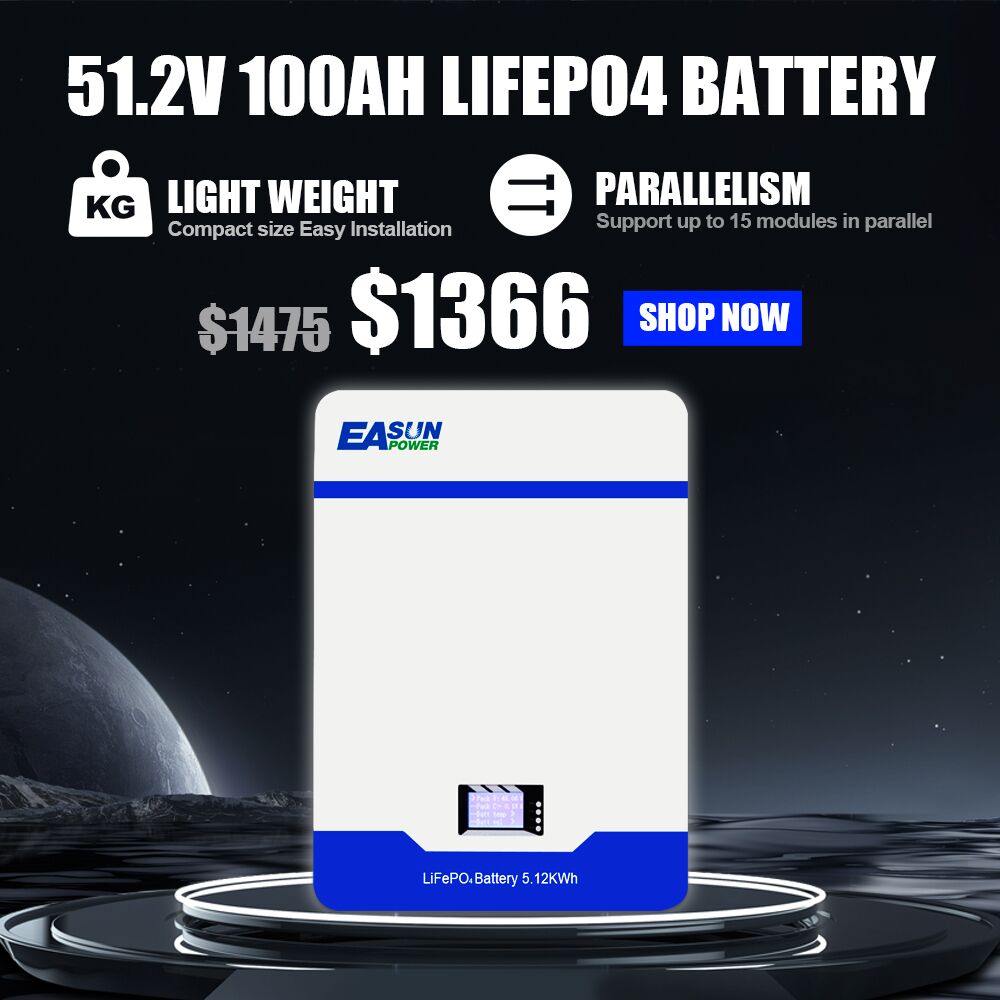
Battery Selection Guide
How does a battery for inverter work in a solar power system?
Generally speaking, batteries are an indispensable part of a solar power system because they allow us to store power generated by the solar panel in the battery, ensuring that the user has power available when the solar panels and the grid are running low. Enhances the capabilities of the solar power setup by providing a dedicated storage solution. In summary, the battery plays the following three roles in the solar system:
Energy Storage:
One of the primary functions of a battery in a solar system is to store the energy generated by solar panels during periods of sunlight. Solar power is intermittent, and energy production is highest when the sun is shining. The battery stores excess energy produced during sunny periods so that it can be used during periods of low or no sunlight, such as at night or during cloudy weather.
Load Balancing:
Batteries help balance the supply and demand of electricity in a solar system. Solar panels may produce more energy than is needed at a particular time, or they may not generate enough to meet the immediate demand. Batteries act as a buffer, storing excess energy during peak production times and releasing stored energy during periods of high demand, ensuring a steady and reliable power supply.
Backup Power Supply:
Batteries provide a reliable backup power source in case of grid outages or during times when solar panels are not generating electricity. This feature is crucial for ensuring a continuous power supply, especially in areas prone to power interruptions or for critical systems that require uninterrupted power.
What are the different types of solar batteries?
Currently, there are mainly two types of battery on the market: lead-acid battery and lithium battery, both of them have their own advantages and disadvantage.
Lithium battery
Lithium battery is light weight, high energy storage, no pollution, long service life, driven by sustainable development, it will become increasingly popular.
48V 100AH LiFePO4 Battery--Wall-mountedOne of Easun's most popular batteries, its main features are light weight; no harmful elements; high safety with BMS system; long service life with more than 6,000 cycles; and wide operating temperature range.

Lead acid batteries are mainly composed of positive and negative plates, spacer plates, sulfuric acid electrolyte, battery tank and other components, but they are not designed to be fully discharged all the time (i.e., only 50% of the depth of discharge).
- Flooded lead acid battery:
- This kind of battery has a cap at the top which can ventilate and block the liquid spill. In the process of use, due to the loss of water evaporation and decomposition, the cap needs to be opened periodically to add distilled water and adjust the electrolyte density, so it is customarily called "open type traction battery".
- Valve-regulated lead acid battery:
- Valve regulated sealed lead-acid battery, also known as maintenance-free battery, is divided into two types: AGM and GEL battery. The electrolyte inside the battery is in a non-flowing state, and the battery remains gas-tight and liquid-tight during normal use.
- Tubular battery:
- The technology used in tubular batteries seals the active material in a polyester tube called armor, rather than affixing it to the surface of the cell plate. As a result, there is no peeling or corrosion, ensuring a long battery life.
Which type of battery is best for my inverter?
The selection needs to take into account efficiency, longevity and environmental impact.
Where lithium-ion batteries are used
Lithium-ion batteries offer versatility and durability, making them an excellent choice. Due to their high energy density and flexibility, they perform well in both off-grid and grid-tied settings. Lithium-ion batteries are not only well-suited for off-grid solar systems, but also for grid-connected applications where energy storage, load shifting and peak shaving are critical.
In addition, LiFePO4/LFP lithium-ion batteries have enhanced safety characteristics compared to lead-acid batteries. They have longer life, deeper discharge capabilities, and require minimal maintenance. This adaptability to various scenarios, coupled with its ruggedness, makes lithium-ion batteries the first choice for energy storage needs, ensuring reliable and efficient power supply.
Where lead-acid batteries are used
Lead-acid batteries find their niche in off-grid solar installations and backup power systems. Their cost-effectiveness and reliability make them a popular choice for these applications. However, their limited depth of discharge and maintenance requirements can be drawbacks.
What size of solar batteries for my inverter
Configure the battery for the inverter mainly considering the following three factors:
- Power Autonomy Duration
- Total Load Consumption and Inverter Efficiency
- Battery Voltage Compatibility and Depth of Discharge
Taking all these factors into consideration will allow you to better plan and configure your backup power system to meet your energy needs while ensuring system reliability and efficiency. When selecting specific equipment and parameters, it's advisable to consult with professional energy system engineers for more detailed and personalized advice.
